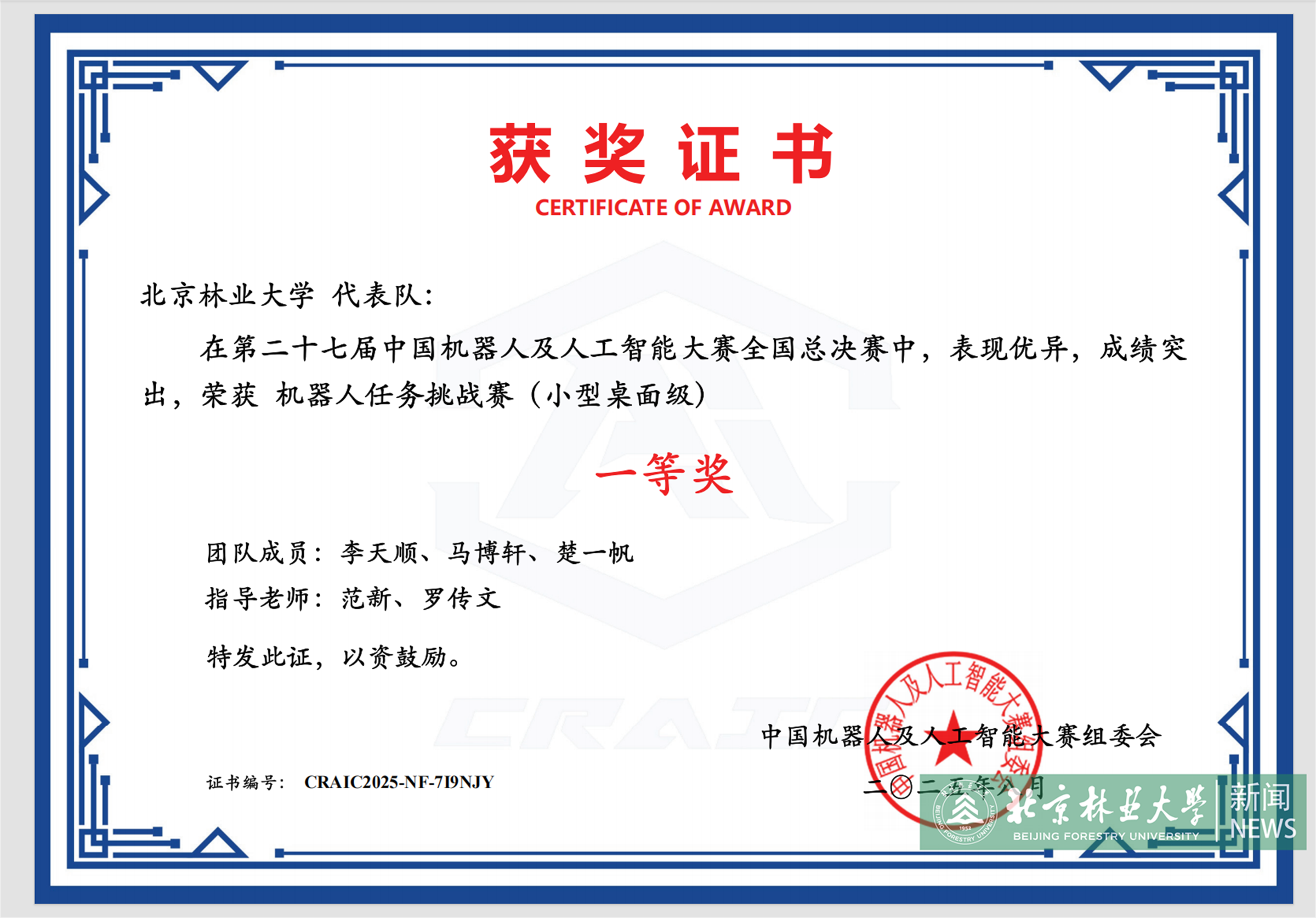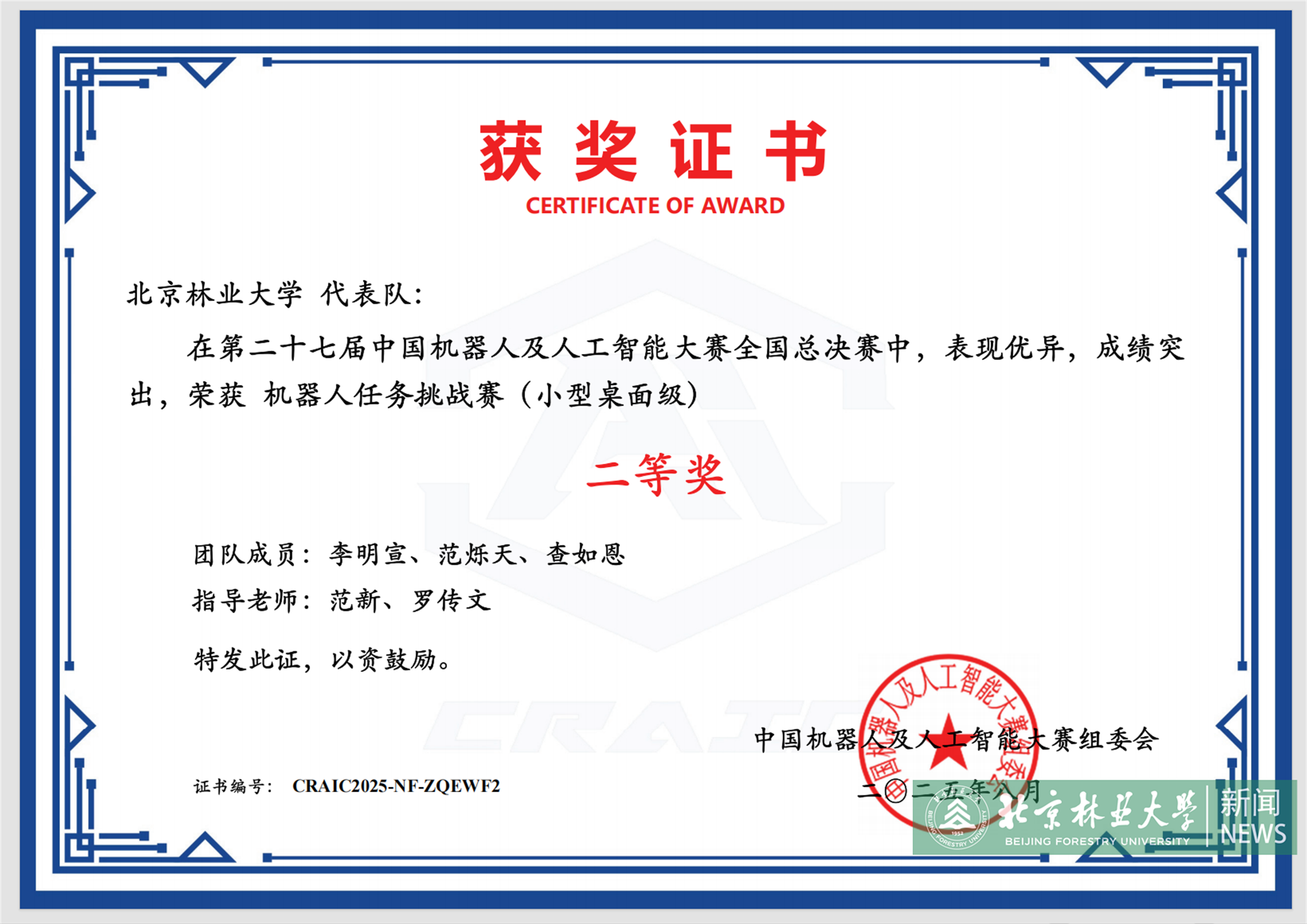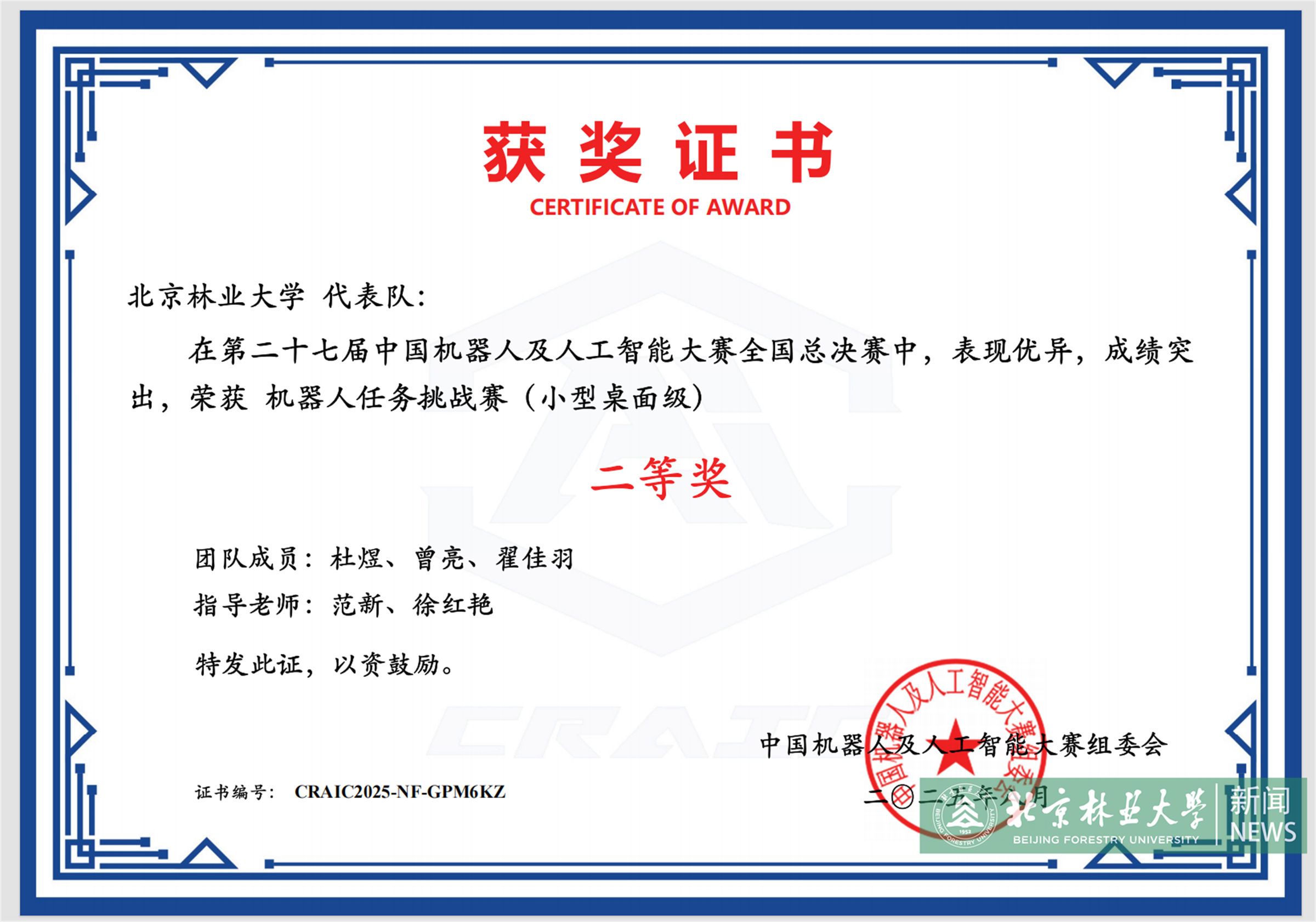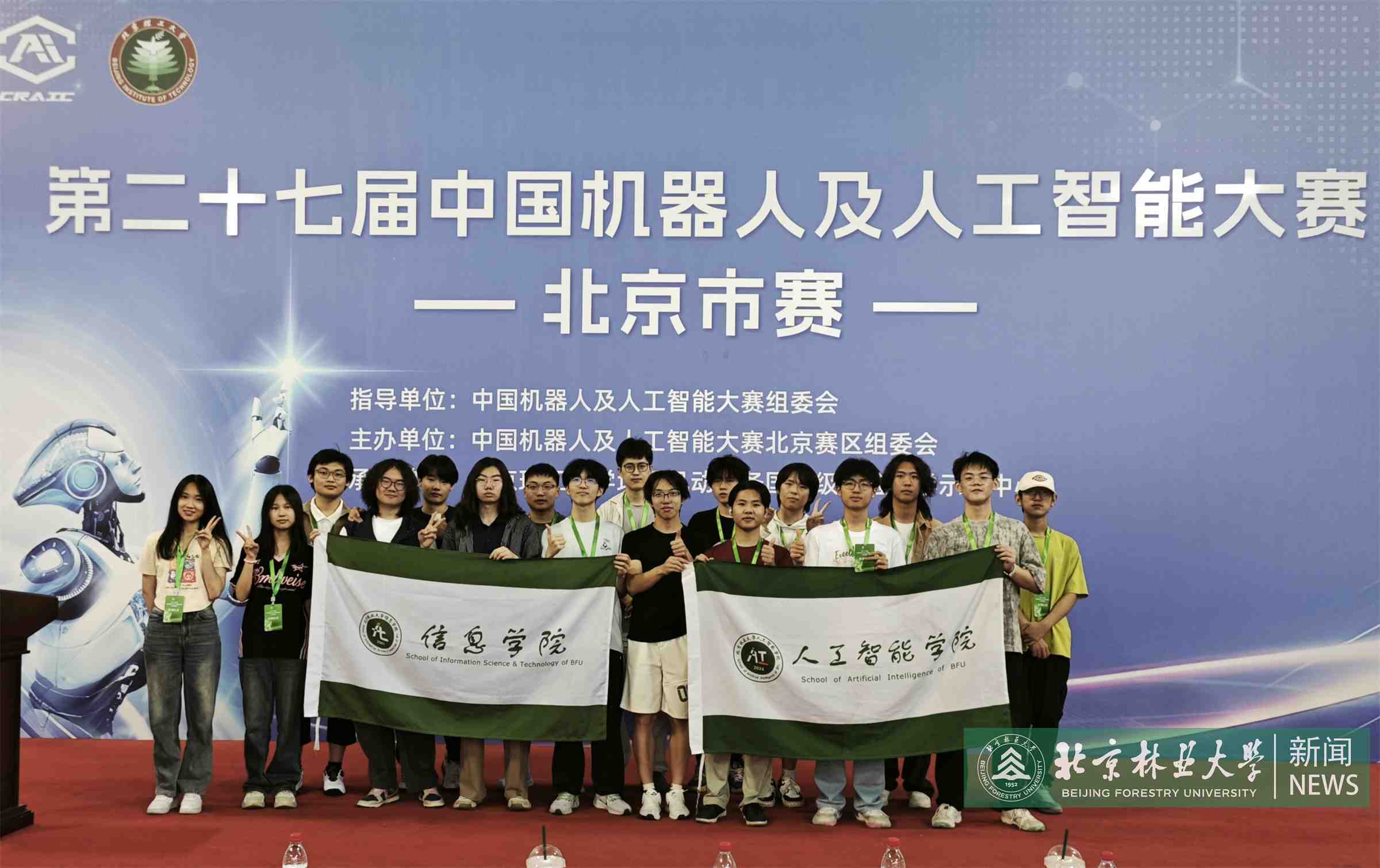Latest news
At the recent 27th China Robotics and Artificial Intelligence Competition (CRAIC), eight teams from BFU's School of Information Science and Technology (School of Artificial Intelligence) captured 11 awards. Three of these teams advanced to the national finals, winning one National First Prize and two National Second Prizes.



The competition drew more than 30,000 teams from over 900 universities and colleges nationwide, involving over 90,000 students. CRAIC featured 20 tracks across four categories—Creativity, Challenge, Application, and Competition—testing contestants' skills in intelligent algorithms, system design and engineering implementation.
In the national finals, BFU teams focused on camera-based object recognition and precise robotic arm grasping and transfer. The team led by Professors Fan Xin and Xu Hongyan applied digital image processing and planar geometry to solve the coordinate transformation between the robotic arm and the vision module, earning a National Second Prize.
A second team led by Fan Xin and Luo Chuanwen optimized the calibration process between the camera and world coordinate systems to speed up deployment and also won a National Second Prize. Meanwhile, a third team under their guidance developed a robust method for detecting camera tilt and realized a millimeter-level accuracy in mapping image pixels to the robotic arm's coordinates, which secured them the National First Prize.

The School of Information Science and Technology (School of Artificial Intelligence) upholds BFU's "technology-led, innovation-driven" philosophy. Its participation in CRAIC is a key step in advancing the university's "AI + Education" initiative and the Action Plan for cultivating well-rounded talents. Beyond expanding students' research horizons, the competition offered valuable hands-on experience that allow students to translate their theoretical knowledge in AI, big data and intelligent systems into practical software and hardware designs for field intelligent devices, paving the way for further exploration in smart forestry and grassland technologies.
Written by Xu Hongyan, Fan Xin
Translated by Wang Yannan
Edited by Song He
Reviewed by Yu Yangyang












